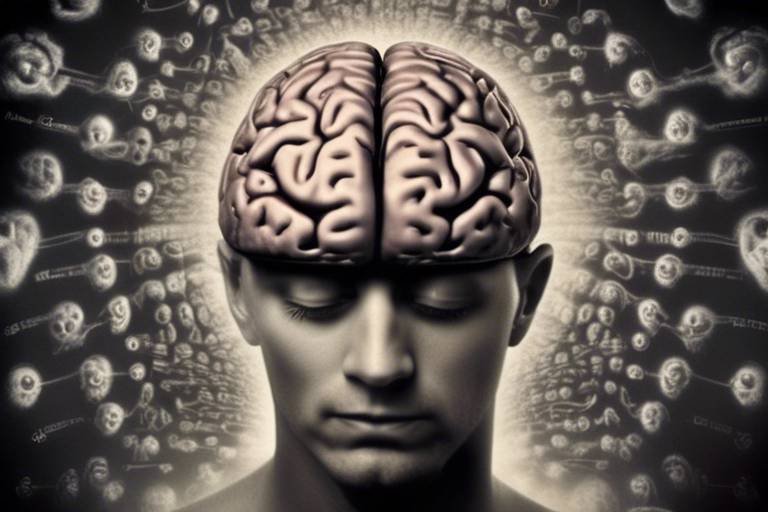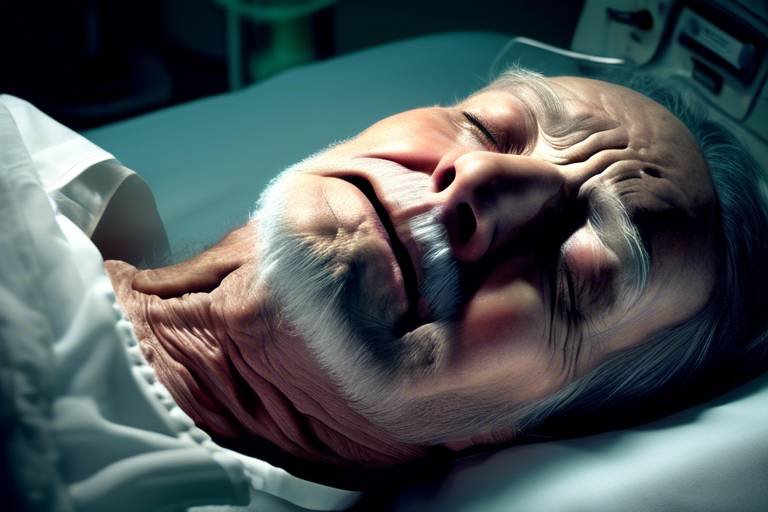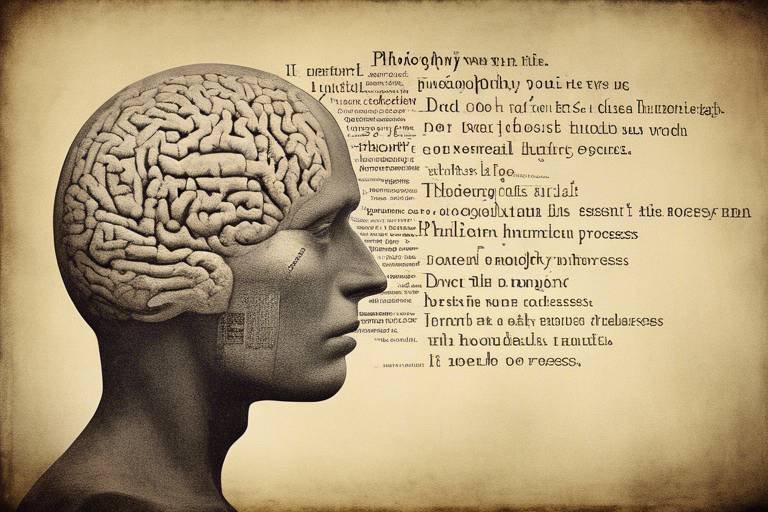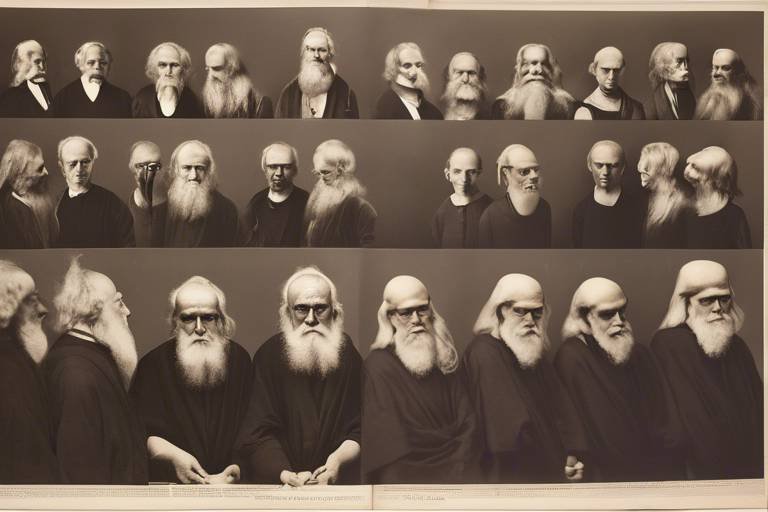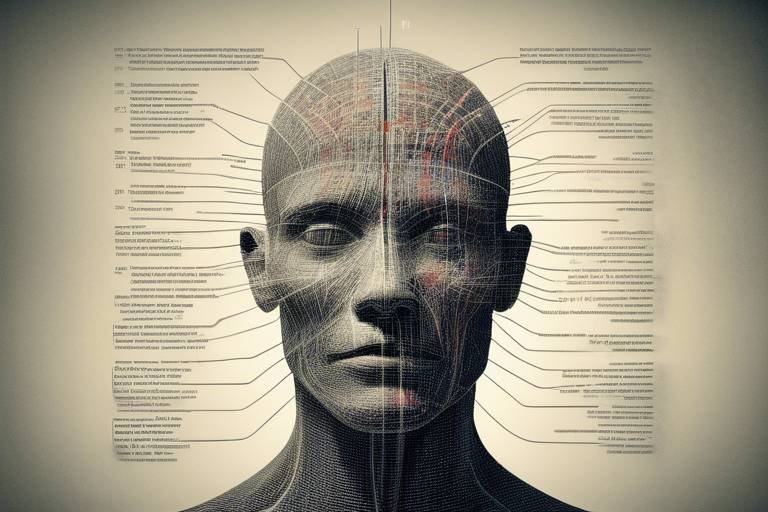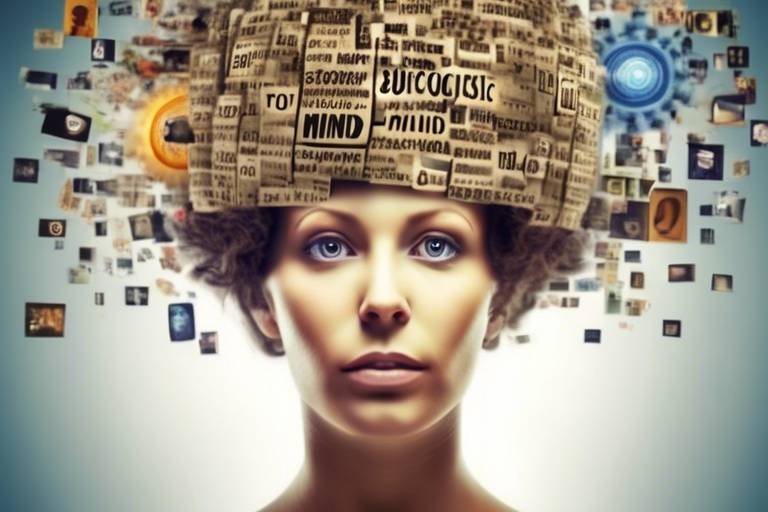Where Does Consciousness Reside in the Brain?
The quest to understand where consciousness resides in the brain is nothing short of a thrilling intellectual adventure. Imagine your brain as a vast, intricate city, filled with bustling streets and hidden alleys. Each part of this city plays a unique role, contributing to the vibrant tapestry of your conscious experience. But where exactly is the heart of this city, the place where consciousness truly resides? This question has puzzled scientists, philosophers, and curious minds alike for centuries.
At its core, consciousness is our awareness of ourselves and our surroundings. It's that inner voice that narrates our thoughts, the spark that ignites our emotions, and the lens through which we perceive reality. While we often think of consciousness as a singular, cohesive experience, it is, in fact, a complex interplay of various brain regions working together in harmony. This interplay raises fascinating questions: Is consciousness localized in one specific area of the brain, or is it a distributed phenomenon? How do different brain states influence our conscious awareness? These questions form the crux of ongoing research and debate in neuroscience.
To delve deeper into this enigma, researchers have proposed several theories aimed at explaining the origins of consciousness. Among these, the Global Workspace Theory suggests that consciousness arises from the integration of information across various brain regions, much like a stage where multiple actors perform their roles in unison. On the other hand, the Integrated Information Theory posits that consciousness is a fundamental property of complex systems, emerging when information is processed in a highly interconnected manner. Both theories provide intriguing insights, yet they also highlight the complexity of pinpointing a singular location for consciousness within the brain.
Recent advancements in neuroimaging techniques have allowed scientists to explore the brain's architecture with unprecedented clarity. By observing brain activity in real-time, researchers can identify specific regions that correlate with conscious experiences. For instance, the prefrontal cortex and the thalamus have emerged as key players in the consciousness arena. The prefrontal cortex, often dubbed the brain's executive center, is crucial for higher-order cognitive processes such as decision-making and self-awareness. Meanwhile, the thalamus serves as a relay station for sensory information, playing a vital role in regulating our conscious state.
As we embark on this journey to uncover the secrets of consciousness, it's essential to consider how attention influences our awareness. Think of attention as a spotlight that illuminates certain aspects of our experience while leaving others in the shadows. When we focus our attention on a particular task, we enhance our conscious experience, suggesting that consciousness is not merely a passive state but an active process shaped by our cognitive efforts.
Moreover, the exploration of altered states of consciousness, such as sleep, meditation, and drug-induced experiences, reveals the incredible flexibility of our conscious mind. During sleep, for instance, our consciousness fluctuates, providing a unique window into the workings of the unconscious mind. Similarly, meditation practices have been shown to alter brain function, enhancing our conscious awareness and offering profound insights into the nature of consciousness itself.
In conclusion, the question of where consciousness resides in the brain is a multifaceted puzzle that continues to captivate researchers and thinkers. While we may not have definitive answers just yet, the journey to uncover its mysteries is filled with excitement and discovery. As we continue to explore the intricate relationship between brain function and consciousness, we may one day unlock the secrets of our own awareness, revealing the intricate dance of neurons that gives rise to the rich tapestry of human experience.
- What is consciousness? - Consciousness is the state of being aware of and able to think about one's own existence, thoughts, and surroundings.
- Where in the brain is consciousness located? - Consciousness is not localized to one specific area but involves multiple brain regions, including the prefrontal cortex and thalamus.
- How does attention affect consciousness? - Attention acts as a spotlight that enhances our conscious experience by focusing on specific stimuli while filtering out others.
- Can altered states of consciousness provide insights into the nature of consciousness? - Yes, exploring altered states like sleep and meditation can reveal important aspects of how consciousness operates.

Theories of Consciousness
When we dive into the realm of consciousness, we quickly discover that it’s not just a simple concept but a complex tapestry woven from various theories and perspectives. One of the most prominent theories is the Global Workspace Theory (GWT), which suggests that consciousness arises when information is globally available across different cognitive processes. Think of it like a stage in a theater: the spotlight shines on certain actors (information) while others remain in the dark, unseen. This theory posits that our conscious experience is like a live performance, where only a select few pieces of information are brought to the forefront, allowing us to process and react to them effectively.
Another intriguing perspective comes from the Integrated Information Theory (IIT). This theory proposes that consciousness corresponds to the level of integrated information generated by a system. In simpler terms, the more interconnected and complex the information processing is within the brain, the richer the conscious experience. Imagine a beautifully woven tapestry where each thread represents a piece of information; the more threads that are woven together, the more intricate and vibrant the tapestry becomes. IIT emphasizes the qualitative aspects of consciousness, suggesting that it's not just about being aware, but about how deeply and richly we experience that awareness.
These theories, while distinct, often overlap and complement each other. For instance, GWT focuses on the accessibility of information, while IIT emphasizes the quality and integration of that information. Both contribute significantly to our understanding of where consciousness might reside within the neural architecture of the brain. Additionally, researchers are continually exploring how these theories can be tested and validated through empirical studies, further enriching our understanding of this elusive phenomenon.
As we explore the landscape of consciousness, it's essential to recognize that these theories are not the end of the conversation. They open the door to a multitude of questions about the nature of awareness itself. Does consciousness emerge solely from biological processes, or is there more to it? Are there aspects of consciousness that remain forever beyond our grasp? These questions keep the dialogue alive, inviting philosophers, scientists, and curious minds alike to ponder the mysteries of our own awareness.
In summary, the theories of consciousness provide a framework for understanding a phenomenon that is both profoundly personal and universally shared. Whether through the lens of Global Workspace Theory or Integrated Information Theory, we are reminded that consciousness is a dynamic interplay of information, perception, and experience—an ongoing quest to uncover the very essence of what it means to be aware.

Neuroscientific Research
Neuroscientific research has made significant strides in uncovering the mysteries of consciousness, employing cutting-edge imaging techniques that allow scientists to peer into the brain like never before. Techniques such as functional Magnetic Resonance Imaging (fMRI) and Positron Emission Tomography (PET) have opened new windows into understanding how our brain operates during conscious thought and awareness. These tools enable researchers to observe the brain in action, mapping out the intricate neural pathways that contribute to our rich tapestry of experiences.
One of the most fascinating aspects of this research is the identification of specific neural correlates of consciousness. These correlates are brain regions and networks that appear to be active when we are aware and engaged with our environment. For example, studies have shown that when individuals are asked to focus on a particular task, certain areas of the brain light up, indicating heightened activity. This connection between brain activity and conscious experience raises intriguing questions about the nature of awareness itself.
Moreover, researchers have discovered that different states of consciousness may activate different brain regions. For instance, while awake and alert, the prefrontal cortex often shows substantial activation, reflecting its role in higher cognitive functions such as decision-making and self-regulation. In contrast, during states of deep sleep, the brain exhibits a very different pattern of activity, highlighting the dynamic nature of consciousness. This variability suggests that consciousness is not a singular state but rather a spectrum influenced by various factors, including attention, environment, and even emotional state.
In addition to imaging techniques, neuroscientific research employs a variety of methodologies to explore consciousness. One approach involves examining patients with brain injuries or disorders that affect consciousness. By studying how these conditions alter conscious experience, researchers can gain valuable insights into the fundamental mechanisms that underlie awareness. For example, individuals with damage to specific brain areas may experience altered states of consciousness, which can provide clues about the functions of those regions in healthy individuals.
Furthermore, the integration of interdisciplinary fields, such as psychology and cognitive science, has enriched the understanding of consciousness. By combining insights from these areas, researchers are beginning to form a more comprehensive picture of how consciousness arises from brain activity. This collaborative approach is crucial, as it allows for the consideration of not only the biological aspects of consciousness but also the psychological and experiential dimensions.
To summarize, neuroscientific research is at the forefront of exploring the complex relationship between consciousness and brain function. Through advanced imaging techniques, the study of brain injuries, and interdisciplinary collaboration, scientists are piecing together the puzzle of where consciousness resides in the brain. As this field continues to evolve, we may uncover even more about the profound nature of our awareness and the mechanisms that govern it.

Brain Regions Involved
Understanding where consciousness resides in the brain is akin to piecing together a complex puzzle, where each piece represents a different brain region contributing to our awareness and cognitive functions. At the heart of this exploration are two critical areas: the prefrontal cortex and the thalamus. These regions do not work in isolation; rather, they form an intricate network that supports our conscious experience. The prefrontal cortex, located at the front of the brain, is often referred to as the executive center. It plays a pivotal role in higher-order cognitive processes such as decision-making, problem-solving, and self-awareness. Imagine it as the conductor of an orchestra, coordinating various sections to create a harmonious symphony of thought and reflection.
On the other hand, the thalamus acts as a crucial relay station for sensory information. It’s like the traffic cop of the brain, directing incoming signals from the senses to the appropriate areas for processing. This region is believed to be integral in regulating consciousness, as it connects various brain regions involved in awareness. When we consider how these two areas interact, it becomes clear that consciousness is not localized to a single spot but is instead a product of a dynamic interplay between different brain regions.
To further illustrate the relationship between these brain regions and consciousness, let’s take a closer look at their specific functions:
| Brain Region | Function |
|---|---|
| Prefrontal Cortex | Higher-order cognitive processes, decision-making, and self-awareness |
| Thalamus | Relay station for sensory information, regulating consciousness |
In addition to these regions, other areas of the brain also contribute to our conscious experience. For instance, the parietal lobe plays a significant role in processing sensory information and spatial awareness, while the temporal lobe is crucial for memory and auditory processing. Together, these regions create a rich tapestry of neural activity that underpins our subjective experiences. It’s fascinating to think about how intricate and interconnected our brain is, and how each region contributes to the grand narrative of consciousness.
In summary, the exploration of brain regions involved in consciousness reveals a complex and dynamic system where different areas collaborate to create our conscious experience. As research advances, we continue to uncover the mysteries of how these regions interact, providing deeper insights into the nature of consciousness itself.
- What is consciousness? Consciousness is the state of being aware of and able to think and perceive one's surroundings, thoughts, and feelings.
- Which brain regions are primarily involved in consciousness? The prefrontal cortex and thalamus are two key regions, but others such as the parietal and temporal lobes also play important roles.
- How does attention affect consciousness? Attention can enhance conscious experience by focusing awareness on specific stimuli, making them more prominent in our perception.
- What are altered states of consciousness? Altered states refer to different levels of awareness, such as those experienced during sleep, meditation, or under the influence of substances.
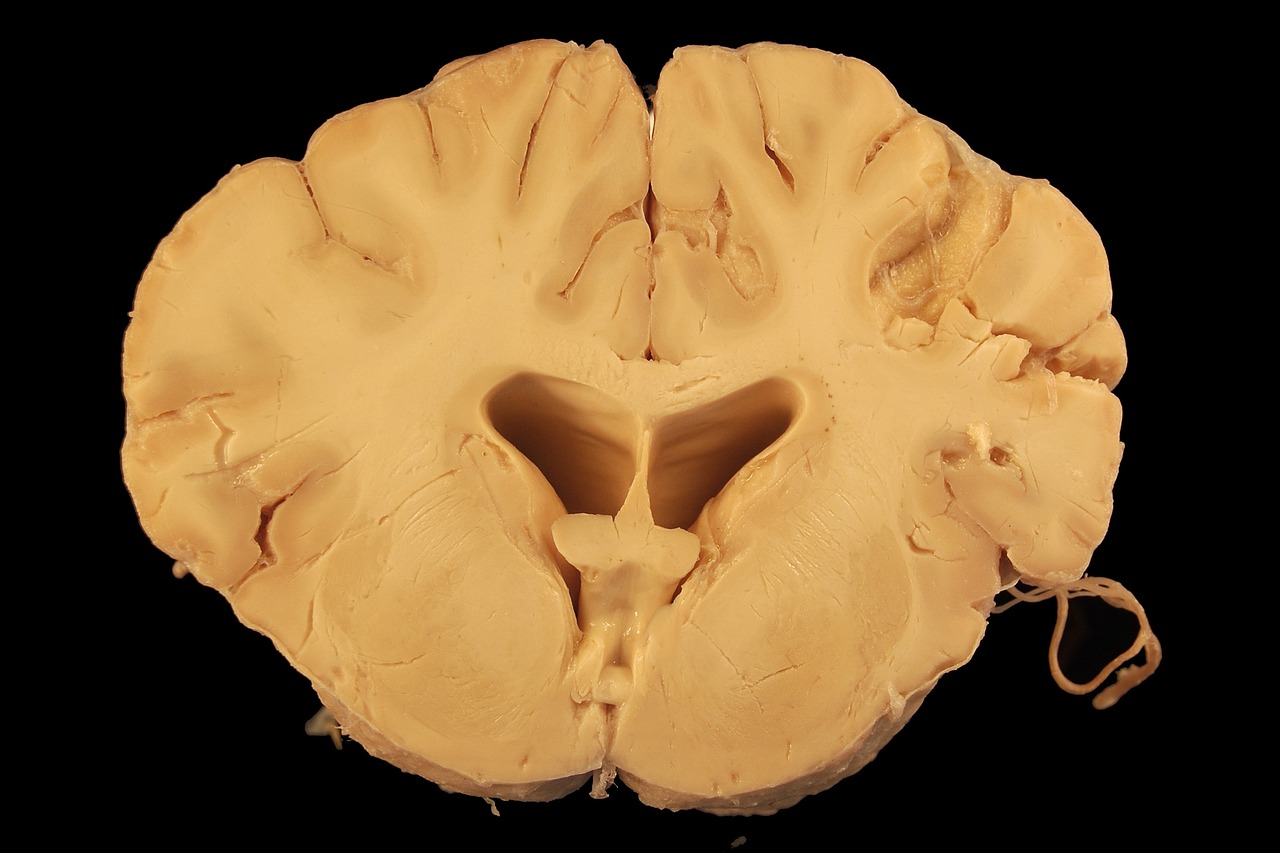
Prefrontal Cortex
The is often regarded as the crown jewel of the human brain, and for good reason. This region, located at the front of the frontal lobes, is pivotal in orchestrating complex cognitive behaviors. It’s like the brain's executive office, where all the big decisions are made, and self-awareness is cultivated. Imagine trying to navigate a bustling city without a map; that’s what life would be like without the prefrontal cortex guiding our actions and thoughts.
One of the most fascinating aspects of the prefrontal cortex is its role in higher-order cognitive processes. This area is responsible for functions such as decision-making, social behavior, and even personality expression. When we face a challenging situation, it’s the prefrontal cortex that steps in to help us weigh our options and consider the consequences of our actions. It’s like having a wise friend who advises us to think twice before making a hasty decision.
Research has shown that the prefrontal cortex is not only involved in conscious thought but also plays a significant role in our emotional responses. For instance, when we experience a strong emotion, such as fear or joy, the prefrontal cortex helps us regulate those feelings, allowing us to respond appropriately to different situations. This interplay between emotion and cognition highlights the complexity of consciousness, suggesting that our awareness is not merely a product of rational thought but is also deeply intertwined with our emotional states.
Moreover, the prefrontal cortex is crucial for self-reflection and understanding our own identity. It enables us to think about our thoughts, a phenomenon known as metacognition. This ability to reflect on our mental processes is what allows us to learn from our experiences and adapt our behavior in the future. It's like having a mirror that not only shows us our physical appearance but also reflects our inner thoughts and feelings.
To illustrate the significance of the prefrontal cortex, consider the following table that summarizes its key functions:
| Function | Description |
|---|---|
| Decision-Making | Evaluating options and making choices based on reasoning. |
| Self-Awareness | Understanding one's own thoughts, feelings, and identity. |
| Emotional Regulation | Managing emotional responses to situations effectively. |
| Social Behavior | Navigating social interactions and understanding social cues. |
In summary, the prefrontal cortex is a remarkable region that not only contributes to our conscious awareness but also shapes our personality and social interactions. Its ability to integrate complex information and facilitate self-reflection makes it a cornerstone of human consciousness. As we continue to explore the intricacies of the brain, the prefrontal cortex will undoubtedly remain a focal point in understanding how consciousness arises and operates within us.
- What is the primary function of the prefrontal cortex?
The prefrontal cortex is primarily responsible for higher-order cognitive processes, including decision-making, self-awareness, and emotional regulation. - How does the prefrontal cortex influence our behavior?
This region helps us evaluate situations, control our emotions, and interact socially, which ultimately guides our behavior in various contexts. - Can the prefrontal cortex be affected by external factors?
Yes, factors such as stress, sleep deprivation, and substance abuse can impair the functioning of the prefrontal cortex, affecting our cognitive abilities and emotional responses.
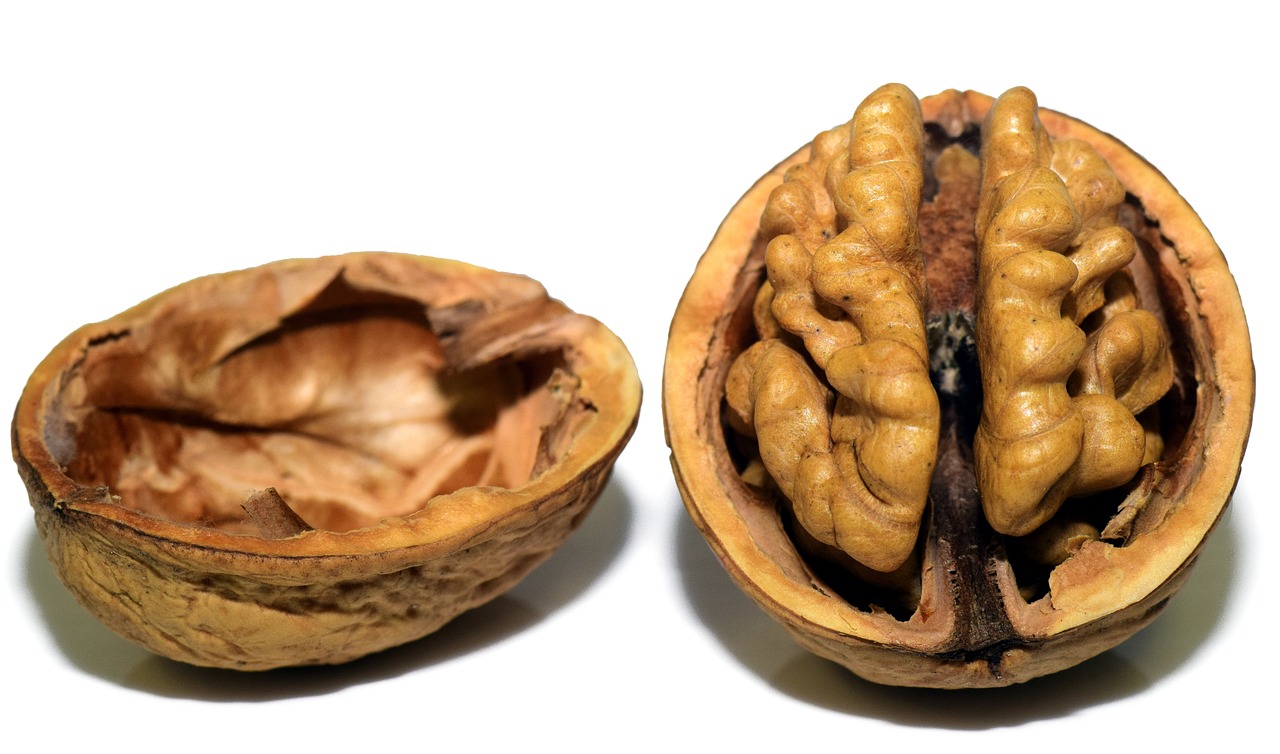
Thalamus
The is often referred to as the brain's "gateway" to consciousness, and for good reason. Nestled deep within the brain, this small yet powerful structure acts as a critical relay station for sensory information. Imagine it as a bustling train station, where sensory signals arrive from various parts of the body, and the thalamus decides which ones get sent on to the cortex for further processing. This role is not just about passing along information; it plays a fundamental part in regulating our conscious experience. Without the thalamus, our ability to perceive and interact with the world around us would be severely compromised.
One of the most fascinating aspects of the thalamus is its involvement in the modulation of consciousness itself. It doesn't merely relay information; it also integrates and filters sensory inputs, helping to determine what we become consciously aware of at any given moment. For instance, when you're in a crowded room, the thalamus helps you focus on a friend's voice while filtering out the background chatter. This ability to prioritize sensory information is crucial for maintaining our attention and awareness.
Moreover, the thalamus is intricately linked to various brain regions, including the cortex, which is responsible for higher-order functions such as thought and decision-making. This connection underscores the thalamus's role in not only processing sensory data but also in shaping our conscious experience. It's like the conductor of an orchestra, ensuring that all the different sections work together harmoniously to create a coherent perception of reality.
Research has shown that damage to the thalamus can lead to profound changes in consciousness. Patients with thalamic injuries may experience altered states of awareness, ranging from a diminished ability to process sensory information to a complete loss of consciousness. This highlights the thalamus's vital role in maintaining the fabric of our conscious experience.
In summary, the thalamus is more than just a relay station; it is a key player in the complex web of consciousness. By integrating and filtering sensory information, it helps shape our awareness and influences how we perceive the world. Understanding the thalamus's role not only enriches our knowledge of brain function but also opens up new avenues for exploring the mysteries of consciousness itself.
- What is the primary function of the thalamus? The thalamus primarily acts as a relay station for sensory information, integrating and filtering signals before they reach the cortex.
- How does the thalamus affect consciousness? The thalamus plays a crucial role in regulating consciousness by determining which sensory inputs are prioritized for awareness.
- What happens if the thalamus is damaged? Damage to the thalamus can lead to altered states of awareness, including difficulties in processing sensory information and potential loss of consciousness.
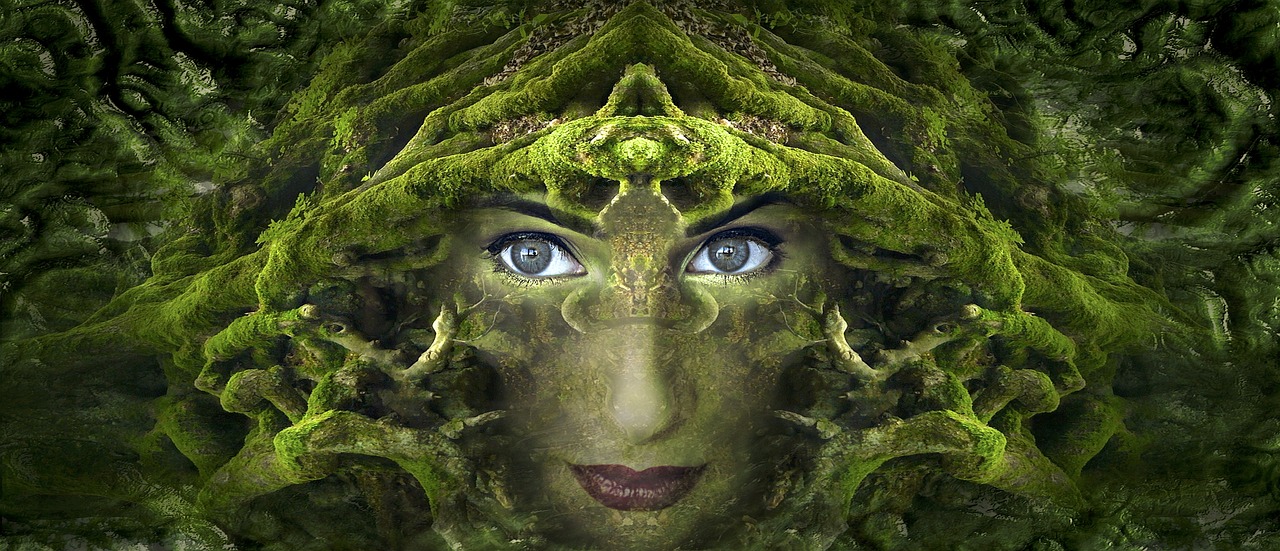
Consciousness and Attention
The relationship between consciousness and attention is not just intriguing; it's fundamental to our understanding of how we experience reality. Have you ever noticed how your awareness can shift in an instant? One moment, you're deeply engrossed in a book, and the next, a loud noise pulls your focus away. This phenomenon illustrates how attention acts as a spotlight, illuminating certain aspects of our consciousness while leaving others in the dark. Essentially, attention can be viewed as the gatekeeper of consciousness, determining what we become aware of at any given moment.
Research shows that focused attention can significantly enhance our conscious experiences. For instance, when we concentrate on a task, our brain's activity aligns with that focus, allowing us to process information more effectively. This is where the concept of the attentional spotlight comes into play. Imagine it as a flashlight in a dark room; wherever you direct that beam, you illuminate the surroundings. Similarly, when we direct our attention, we enhance our awareness of specific stimuli while other stimuli fade into the background.
Moreover, the interplay between consciousness and attention has profound implications for our daily lives. Think about multitasking—when we try to juggle multiple tasks, our attention becomes divided. This division can lead to a diminished conscious experience of each task, resulting in errors or a lack of depth in our engagement. In essence, the more we spread our attention thin, the less conscious awareness we have of each individual task. This raises a compelling question: Are we truly aware of everything happening around us, or are we merely skimming the surface of our experiences?
To further understand this dynamic, researchers have conducted various studies that explore how attention affects consciousness. For example, experiments have shown that when participants are instructed to focus on a specific visual stimulus, their awareness of other stimuli in the environment diminishes. This suggests that attention not only enhances our awareness of certain aspects of our surroundings but also actively suppresses others. Such findings highlight the selective nature of consciousness, which is shaped significantly by where we direct our attention.
In summary, the relationship between consciousness and attention is a complex and fascinating area of study. It emphasizes how our conscious experiences are not merely passive reflections of reality but are actively shaped by our attentional focus. So the next time you find your mind wandering or your attention divided, remember that your consciousness is navigating a vast sea of information, selectively choosing what to highlight and what to ignore. This intricate dance between consciousness and attention is essential for understanding not only how we perceive the world but also how we engage with it on a deeper level.
- What is the difference between consciousness and attention?
While consciousness refers to our overall awareness of ourselves and our environment, attention is the process of focusing on specific stimuli within that awareness. Think of consciousness as the entire stage and attention as the spotlight that highlights certain actors. - Can we train our attention?
Yes, practices such as mindfulness meditation can enhance our ability to focus and improve our attentional control, leading to a more profound conscious experience. - How does distraction affect consciousness?
Distractions can fragment our conscious experience, making it harder to engage deeply with tasks or stimuli. This can lead to a superficial understanding of our surroundings and experiences.

Altered States of Consciousness
When we think about consciousness, it's easy to imagine it as a steady stream of awareness, like a calm river flowing through our minds. However, consciousness isn't always so straightforward. It can shift and change, creating what we refer to as . These states can occur naturally or be induced through various practices and substances, revealing the fascinating flexibility of our awareness. Have you ever wondered what happens to our consciousness during sleep or meditation? Or how certain drugs can catapult us into entirely different realms of experience? Let's dive into this captivating topic!
One of the most common altered states is sleep. While we often think of sleep as a time when our consciousness fades away, it's actually a complex state where our awareness fluctuates. During sleep, we cycle through various stages, including REM (Rapid Eye Movement) sleep, where dreaming occurs. Interestingly, studies show that the brain remains quite active during these periods, suggesting that our subconscious mind continues to process information, emotions, and experiences. This raises intriguing questions: Are dreams a window into our unconscious thoughts? Or are they merely random firings of neurons? The answers are still being explored, but the relationship between sleep and consciousness is undeniably profound.
Another fascinating aspect of altered states is the impact of meditation. Many people practice meditation to achieve a heightened state of awareness, and research supports the idea that meditation can significantly alter brain function. Through techniques such as mindfulness and focused attention, individuals can experience a deep sense of clarity and presence. Studies have shown that regular meditation can lead to changes in brain structures, particularly in areas associated with self-awareness and emotional regulation. It’s as if meditation acts as a key, unlocking different levels of consciousness and providing insights into our true nature.
In addition to natural processes like sleep and meditation, certain substances can also induce altered states. From the ancient use of psychedelics in spiritual rituals to modern explorations of their therapeutic potential, drugs like psilocybin and LSD have been shown to profoundly affect consciousness. These substances can dissolve the boundaries of the self, leading to experiences that feel transcendent or mystical. But what does this mean for our understanding of consciousness? Are we tapping into a deeper reality, or are we simply altering our brain chemistry? The debate continues, and as we study these substances, we may uncover more about the intricate relationship between brain activity and conscious experience.
Overall, altered states of consciousness challenge our traditional views of awareness. They remind us that consciousness is not a fixed entity but a dynamic spectrum influenced by various factors, including our mental state, environment, and even our biology. Whether through sleep, meditation, or the influence of substances, these altered states provide valuable insights into the nature of our minds. So the next time you drift off to sleep or find yourself lost in meditation, consider the incredible journey your consciousness is on. What mysteries might it reveal?
- What are altered states of consciousness? Altered states of consciousness refer to any state of awareness that differs from the normal waking state, including sleep, meditation, and drug-induced experiences.
- How does sleep affect consciousness? Sleep involves various stages, including REM sleep, where the brain remains active and can produce dreams, indicating that consciousness continues to function even when we are not awake.
- Can meditation change the brain? Yes, studies suggest that regular meditation can lead to structural changes in the brain, particularly in areas related to self-awareness and emotional regulation.
- What role do substances play in altering consciousness? Certain substances can induce profound changes in perception and awareness, often leading to experiences that feel transcendent or connected to a greater reality.
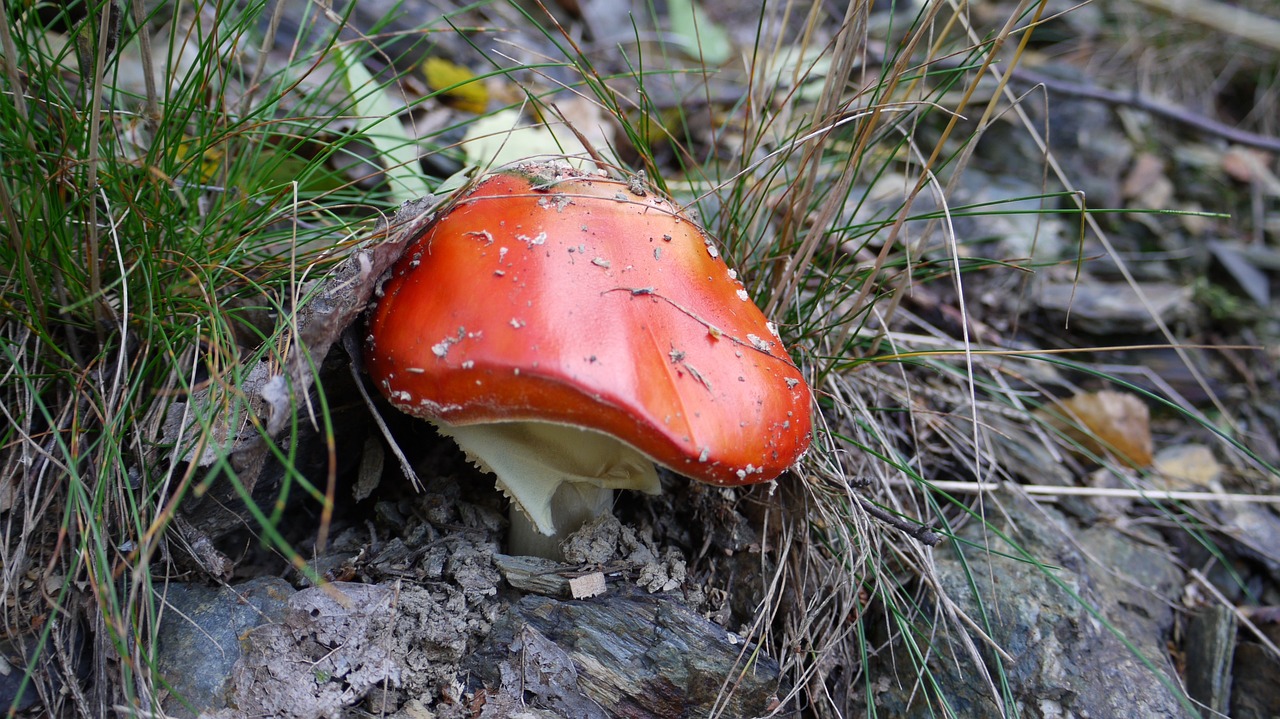
Sleep and Dreams
Sleep is a fascinating and mysterious state that significantly impacts our consciousness. When we drift off into slumber, we enter a world where our awareness fluctuates, and our brain engages in a complex dance of activity. Have you ever woken up from a vivid dream, feeling as though you had just traveled to another universe? That’s the power of sleep and dreams! They reveal the intricate workings of our mind and how our consciousness can shift dramatically based on our brain's state.
During sleep, especially in the REM (Rapid Eye Movement) phase, our brain exhibits heightened activity that resembles that of being awake. This is when most vivid dreams occur, and it’s believed that these dreams play a crucial role in processing emotions, consolidating memories, and even problem-solving. So, while we may think that sleep is a time of rest, it is actually a period of intense brain activity that shapes our conscious experiences.
Interestingly, the brain's activity during sleep can be mapped out, revealing specific patterns that correlate with different stages of consciousness. For instance, during deep sleep, the brain waves slow down significantly, indicating a state of reduced awareness. In contrast, during REM sleep, brain activity spikes, suggesting that our consciousness is more active, albeit in a different form. Here’s a brief overview of the stages of sleep and their relation to consciousness:
| Sleep Stage | Brain Activity | Consciousness Level |
|---|---|---|
| Awake | Beta waves | High |
| Light Sleep | Alpha waves | Moderate |
| Deep Sleep | Delta waves | Low |
| REM Sleep | Beta waves | High |
This table illustrates how our brain transitions through various states during sleep, influencing our consciousness. The interplay of these stages highlights how sleep is not merely a passive state but an active process that shapes our waking lives. Moreover, dreams often blur the lines between reality and imagination, leading us to question the very nature of consciousness. Are dreams merely a reflection of our subconscious thoughts, or do they serve a deeper purpose in our understanding of self?
Furthermore, sleep disorders can significantly impact our consciousness. Conditions like insomnia or sleep apnea can disrupt the natural sleep cycle, leading to fragmented sleep and diminished cognitive function. This raises an important question: how vital is quality sleep for maintaining our conscious awareness? The answer is profound—adequate sleep is essential for optimal brain function and, by extension, our conscious experience.
In conclusion, sleep and dreams offer a unique window into the workings of our consciousness. They remind us that our awareness is not a static state but rather a dynamic interplay of brain activity, emotional processing, and memory consolidation. As we continue to explore the mysteries of sleep, we uncover more about the essence of consciousness itself.
- What is the purpose of dreaming? Dreams are thought to help process emotions, consolidate memories, and even solve problems.
- How does sleep affect consciousness? Sleep alters brain activity, influencing our levels of awareness and cognitive function.
- What are the stages of sleep? The stages include awake, light sleep, deep sleep, and REM sleep, each with different brain activity patterns.
- Can sleep disorders affect consciousness? Yes, sleep disorders can disrupt the natural sleep cycle and negatively impact cognitive function and awareness.

Impact of Meditation
Meditation is more than just a buzzword; it's a powerful practice that has been embraced by cultures around the world for centuries. When we dive into the impact of meditation on consciousness, we uncover a treasure trove of insights that reveal how our minds can be both shaped and reshaped through this mindful practice. Have you ever wondered how a simple act of sitting quietly can lead to profound changes in your awareness? It's almost like flipping a switch in your brain, illuminating areas that were previously dim.
Research has shown that meditation can lead to significant alterations in brain function. For instance, studies utilizing neuroimaging techniques have demonstrated that regular meditators often exhibit increased gray matter density in regions associated with memory, emotional regulation, and self-awareness. This suggests that meditation doesn’t just change how we think; it actually alters the physical structure of our brains. Imagine your brain as a city, with meditation acting as a construction crew, building new roads and bridges that enhance connectivity and efficiency.
One of the most fascinating aspects of meditation is its ability to enhance conscious awareness. Through practices like mindfulness meditation, individuals learn to focus their attention on the present moment, which can lead to a greater understanding of one's thoughts and feelings. This heightened state of awareness can be incredibly liberating, allowing practitioners to observe their mental processes without judgment. It's like stepping back and watching a movie of your own life, gaining insights that were previously obscured by the hustle and bustle of daily existence.
Moreover, meditation has been linked to improved emotional well-being. By cultivating a regular meditation practice, individuals often report lower levels of stress and anxiety, which can cloud consciousness and hinder self-awareness. The act of meditating encourages a state of relaxation that counteracts the frenetic pace of modern life. In this state, the brain can engage in deeper processing, leading to revelations about personal challenges and the nature of one's consciousness.
To illustrate the impact of meditation on the brain, consider the following table that summarizes some key findings:
| Brain Region | Effect of Meditation |
|---|---|
| Prefrontal Cortex | Increased activity associated with higher-order thinking and self-regulation. |
| Hippocampus | Enhanced memory and emotional regulation through increased gray matter. |
| Insula | Greater awareness of bodily sensations and emotions. |
| Thalamus | Improved sensory processing and integration. |
In essence, meditation acts as a bridge connecting our conscious and subconscious minds. By engaging in this practice, we can explore the depths of our consciousness, unveiling layers of understanding that contribute to a richer, more fulfilling life. Whether you're a seasoned meditator or just curious about the practice, the potential benefits for your consciousness are profound. So, why not give it a try? You might just discover a whole new dimension of awareness waiting to be explored.
- What is meditation? Meditation is a practice that involves focusing the mind to achieve a state of mental clarity, emotional stability, and heightened awareness.
- How does meditation affect the brain? Meditation can lead to changes in brain structure and function, improving areas related to memory, emotional regulation, and self-awareness.
- Can anyone meditate? Yes, meditation is accessible to everyone, regardless of experience level. It's about finding a practice that resonates with you.
- How long should I meditate for? Even a few minutes a day can be beneficial. As you become more comfortable, you can gradually increase the duration.

Philosophical Perspectives
When it comes to understanding the enigma of consciousness, philosophical perspectives offer a treasure trove of inquiries that challenge our conventional views. At the heart of these discussions lies the mind-body problem, a philosophical dilemma that questions how our mental states—thoughts, feelings, and experiences—relate to our physical brain. Are they two separate entities, or is consciousness merely a product of brain activity? This question has puzzled philosophers for centuries, leading to various schools of thought.
One prominent view is dualism, famously championed by René Descartes, which posits that the mind and body are distinct and fundamentally different substances. According to dualists, consciousness exists independently of the physical brain, suggesting that our thoughts and experiences cannot be fully explained by neural activity alone. This perspective raises intriguing questions: If the mind is separate from the body, how do they interact? Can consciousness exist outside of a physical medium?
In contrast, materialism—another philosophical stance—argues that everything about consciousness can be explained through physical processes in the brain. Materialists assert that mental states are simply the result of neural interactions and that our subjective experiences are deeply intertwined with the workings of our brain. This perspective aligns closely with scientific research, which increasingly seeks to map consciousness to specific brain activities. However, it also faces challenges, particularly in addressing the qualitative aspects of consciousness, often referred to as the “hard problem” of consciousness. How do we account for the richness of our experiences, such as the taste of chocolate or the feeling of love, purely through physical explanations?
Furthermore, the philosophical debate extends into the realm of panpsychism, a more radical theory suggesting that consciousness is a fundamental feature of the universe, present even in the simplest forms of matter. According to this view, consciousness is not exclusive to humans or complex organisms but is a property inherent in all things. This perspective invites us to reconsider our understanding of consciousness, urging us to see it as an interconnected web of awareness that permeates existence.
To illustrate these philosophical perspectives, consider the following table that summarizes the key viewpoints:
| Philosophical Perspective | Description |
|---|---|
| Dualism | The mind and body are distinct entities; consciousness exists independently of the brain. |
| Materialism | Consciousness arises solely from physical processes in the brain; mental states are reducible to neural activity. |
| Panpsychism | Consciousness is a fundamental property of all matter, not just complex organisms. |
In conclusion, the philosophical exploration of consciousness not only deepens our understanding of this complex phenomenon but also highlights the limitations of our current scientific frameworks. As we continue to unravel the mysteries of the mind, it becomes increasingly clear that consciousness is not merely a scientific puzzle but a profound inquiry into the nature of existence itself. The interplay between philosophy and neuroscience may one day illuminate the path toward a more comprehensive understanding of consciousness, bridging the gap between the physical and the experiential.
- What is the mind-body problem? The mind-body problem is a philosophical question concerning the relationship between mental states and physical brain processes.
- What is dualism? Dualism is the belief that the mind and body are separate entities, with consciousness existing independently of physical processes.
- How does materialism explain consciousness? Materialism posits that consciousness arises solely from physical processes in the brain, suggesting that mental experiences can be reduced to neural activity.
- What is panpsychism? Panpsychism is the view that consciousness is a fundamental feature of all matter, indicating that even simple forms of matter possess some level of awareness.
Frequently Asked Questions
- What is consciousness?
Consciousness is the state of being aware of and able to think about one's own existence, thoughts, and surroundings. It encompasses everything from our sensory perceptions to our thoughts and emotions, creating a rich tapestry of subjective experience.
- Where in the brain does consciousness originate?
While there's no single "home" for consciousness in the brain, several key areas, including the prefrontal cortex and thalamus, play significant roles. The prefrontal cortex is involved in higher-order thinking and self-awareness, while the thalamus acts as a relay for sensory information, crucial for our conscious experience.
- How does attention relate to consciousness?
Attention is like a spotlight that enhances our conscious experience. When we focus on something, we become more aware of it, which suggests that our consciousness can be influenced by where we direct our attention. This interplay is vital for understanding how we perceive the world around us.
- Can altered states of consciousness provide insights into awareness?
Absolutely! Altered states, such as those induced by sleep, meditation, or drugs, offer unique windows into how consciousness operates. For instance, during sleep, our consciousness fluctuates, revealing the complexities of awareness and the unconscious mind.
- What impact does meditation have on consciousness?
Meditation can significantly alter brain function, enhancing conscious awareness and mindfulness. Practicing meditation helps individuals develop a deeper understanding of their thoughts and feelings, ultimately leading to a more profound grasp of consciousness itself.
- What are some philosophical questions surrounding consciousness?
Philosophical inquiries, like the mind-body problem and dualism, challenge our understanding of how physical brain states relate to subjective experiences. These discussions help explore the nature of consciousness and its place in the broader context of human existence.

